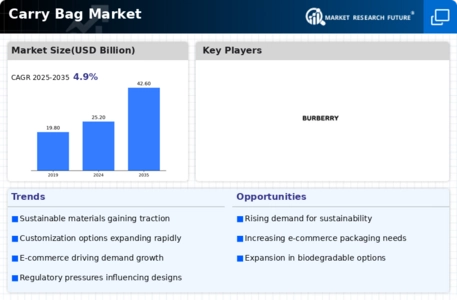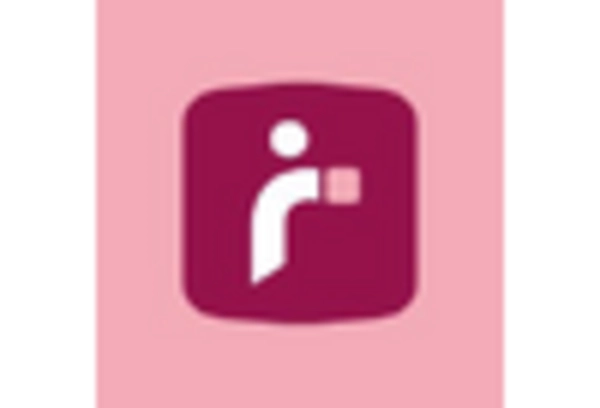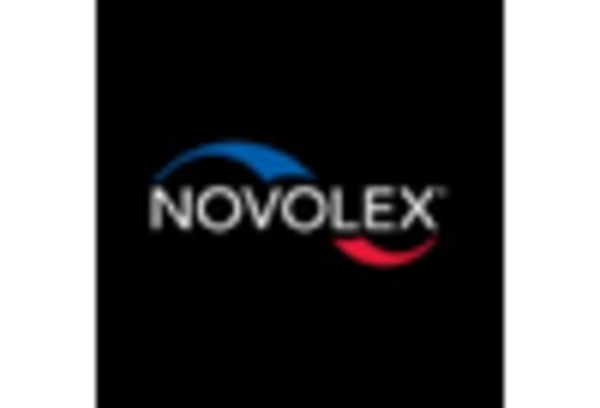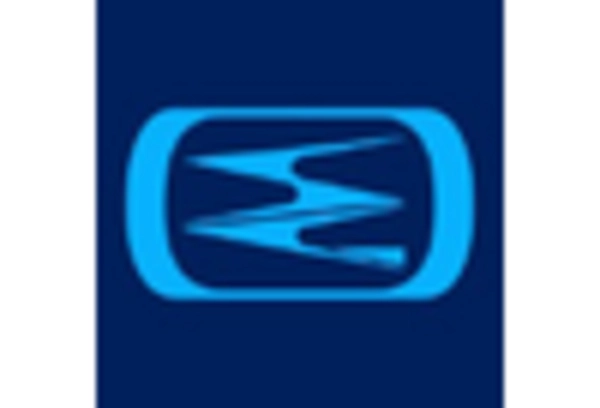The Carry Bag Market is currently characterized by a dynamic competitive landscape, driven by increasing consumer demand for sustainable packaging solutions and the ongoing shift towards eco-friendly materials. Key players such as Amcor (AU), Mondi (GB), and Sealed Air (US) are strategically positioning themselves to capitalize on these trends. Amcor (AU) focuses on innovation in sustainable packaging, emphasizing the development of recyclable and biodegradable materials. Meanwhile, Mondi (GB) has adopted a dual strategy of regional expansion and product diversification, enhancing its portfolio with sustainable carry bag options. Sealed Air (US) is leveraging digital transformation to optimize its supply chain and improve customer engagement, thereby reinforcing its market presence. Collectively, these strategies contribute to a competitive environment that is increasingly centered around sustainability and technological advancement.
In terms of business tactics, companies are localizing manufacturing to reduce lead times and enhance responsiveness to market demands. Supply chain optimization remains a critical focus, as firms seek to mitigate risks and improve efficiency. The Carry Bag Market appears moderately fragmented, with several key players exerting influence while also facing competition from smaller, innovative firms. This structure allows for a diverse range of products and solutions, catering to varying consumer preferences and regulatory requirements.
In August 2025, Amcor (AU) announced a partnership with a leading technology firm to develop smart packaging solutions that enhance product traceability and sustainability. This strategic move is significant as it aligns with the growing consumer preference for transparency in packaging, potentially setting a new standard in the industry. By integrating technology into its product offerings, Amcor (AU) not only enhances its competitive edge but also addresses the increasing regulatory pressures for sustainable practices.
In September 2025, Mondi (GB) launched a new line of compostable carry bags aimed at the retail sector, responding to the rising demand for environmentally friendly packaging. This initiative underscores Mondi's commitment to sustainability and positions the company as a leader in the eco-friendly segment of the market. The introduction of compostable options may attract environmentally conscious consumers, thereby expanding Mondi's market share and reinforcing its brand reputation.
In October 2025, Sealed Air (US) unveiled a new digital platform designed to streamline the ordering process for its carry bag products, enhancing customer experience and operational efficiency. This digital transformation initiative is crucial as it reflects the industry's shift towards e-commerce and online solutions. By improving accessibility and responsiveness, Sealed Air (US) is likely to strengthen its customer relationships and drive sales growth in a competitive market.
As of October 2025, the Carry Bag Market is witnessing trends that emphasize digitalization, sustainability, and the integration of artificial intelligence in operations. Strategic alliances among key players are shaping the competitive landscape, fostering innovation and collaboration. Looking ahead, it is anticipated that competitive differentiation will increasingly pivot from price-based strategies to a focus on innovation, technological advancements, and supply chain reliability. This evolution suggests that companies that prioritize sustainable practices and technological integration will likely emerge as leaders in the Carry Bag Market.

















Leave a Comment